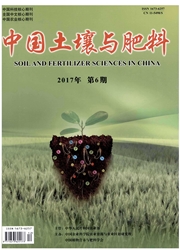

 中文摘要:
中文摘要:
探讨不同海拔蔬菜高效种植区域内对土壤养分和酶活性的影响,为蔬菜高效种植的土壤养分管理提供依据。对贵州省高、中、低不同海拔区域的蔬菜地土壤进行取样,分析测定了土壤有机质、氮磷钾养分和酶活性的变化。结果表明,连续3年蔬菜高效种植的土壤有机质、全量氮、磷、钾与农民传统种植无明显差异,蔬菜高效种植模式下土壤碱解氮、有效磷有明显积累;土壤磷酸酶活性有随海拔增高而增大趋势;蔬菜高效模式下的酸性磷酸酶活性大于单作或稻油轮作;土壤脲酶活性受种植模式的影响大于海拔;参考菜园土壤速效养分丰缺指标,低海拔区三都县应适当减少氮磷钾化肥用量,中海拔区福泉市和高海拔区大方县应适当增加磷、钾化肥用量。
 英文摘要:
英文摘要:
In order to explore the effects of different vegetable planting patterns on soil nutrients and enzyme activity, and to provide a theoretical basis for the fertilizer application of vegetables efficient planting modes in Guizhou, soil samples under different vegetable planting modes on high, medium and low altitude areas respectively were taken in Guizhou province. The changes of the soil nutrients and enzyme activities were determined. The results showed that there was no significant difference between the vegetable efficient planting modes and the traditional modes of farmers for soil organic matter, total nitrogen, total phosphorus and total potassium within 3 years, but soil available nitrogen and soil available phosphorus accumulated significantly under vegetable efficient planting patterns. With the increasing of altitude, the soil acid phosphatase activity increased, and the soil acid phosphatase activity was higher in the soil of the vegetable efficient planting modes than that of the traditional modes. Planting modes had more impact on the soil urease activity than altitude. According to the indexes of available nutrient abundance and deficiency for garden soil, the amount of nitrogen, phosphorus, and potash fertilizer in Sandu county should be appropriately re- duced, while in Fuquan and Dafang county, the amount of phosphorus and potassium fertilizer should be appropriately increased.
 同期刊论文项目
同期刊论文项目
 同项目期刊论文
同项目期刊论文
 期刊信息
期刊信息
